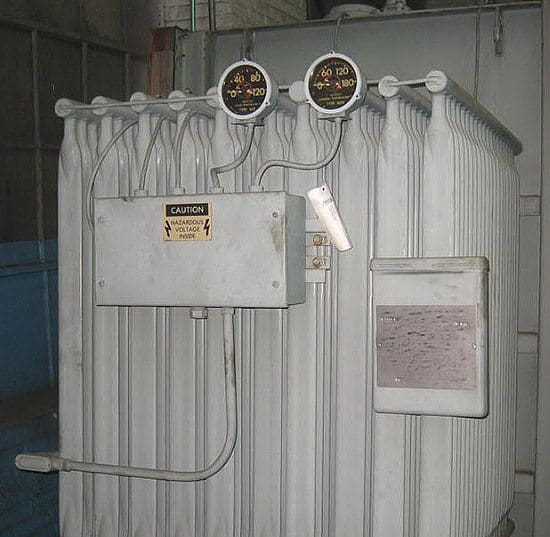
Medium power transformer routine maintenance
The following periodic tests and inspections are recommended for routine maintenance of the medium power substation transformer.
- Gauge readings
- Cooling fans
- Control wiring
- Paint finish
- Fluid dielectric test
- Bushing and surge arrester insulators
- Bushing terminals
- Gaskets
1. Gauge readings
One month after initial energization and annually thereafter
Gauge readings, ambient temperature, and kvA load should be measured and recorded. Any abnormal reading suggests that further diagnostic testing or inspection should be done. If pressure/vacuum gauge and/or fluid level gauge readings suggest a possible tank leak, perform a pressure test according to instructions (15 Pre-energization Tests and Checklist).
Tank leaks must be repaired immediately to prevent serious damage to the transformer and danger to life.

2. Cooling fans (annual)
Check the cooling fans (if any) by setting the fan “auto/manual” control switch to the “manual” position. The fans should rotate at full speed within approximately five seconds. The fans should rotate smoothly with minimal vibration.

3. Control wiring (annual)
Control wiring should be checked to insure that wire insulation is in good condition. The control cabinet and associated conduit should be inspected to ensure that weather seals are intact.
Control power supply voltage should be checked and compared to the voltage stated on the wiring diagram.

4. Paint finish (annual)
Inspect the paint finish for damage or weathering that exposes the primer coat or bare metal. Repair any paint damage that might be found.

5. Fluid dielectric test (annual)
Sample the insulating fluid as described below. The dielectric strength of the insulating fluid should measure at least 26 kV.
Sampling of Insulating Fluid //
Transformers are filled with insulating fluid, which provides electrical insulation within the transformer tank and transfers heat generated in the coils to the tank wall and radiators.
The fluid is either:
- Conventional transformer oil (mineral oil),
- Envirotemp® FR3 fluid, or
- Silicone fluid.
It is also recommended that a fluid sample be drawn annually and tested for dielectric strength. Samples should be drawn from the bottom of the tank. Use proper sampling procedures to prevent erroneous test results. Dielectric strength should measure 26 kv minimum.

6. Bushing and surge arrester insulators (annual)
Bushing and surge arrester insulators should be clean. If the surfaces are excessively dirty, they should be cleaned while the transformer is not energized.

7. Bushing terminals
One month after initial energization and annually thereafter
If the transformer is energized and under load, measure bushing terminal temperatures using an infrared scanner. Excessive bushing terminal temperature indicates a loose or dirty connection. If the transformer is not energized, use a torque measuring device to make sure terminal connections are tight.

8. Check the gaskets
Visually check all gaskets for cracking or other signs of deterioration. Replace as necessary.
Do not reuse old gaskets. Six months after replacing a gasket, check and retighten if necessary.

Reference // Instructions Installation, Operation, and Maintenance of Medium Power Substation Transformers – Howard Industries // Substation Transformer Division